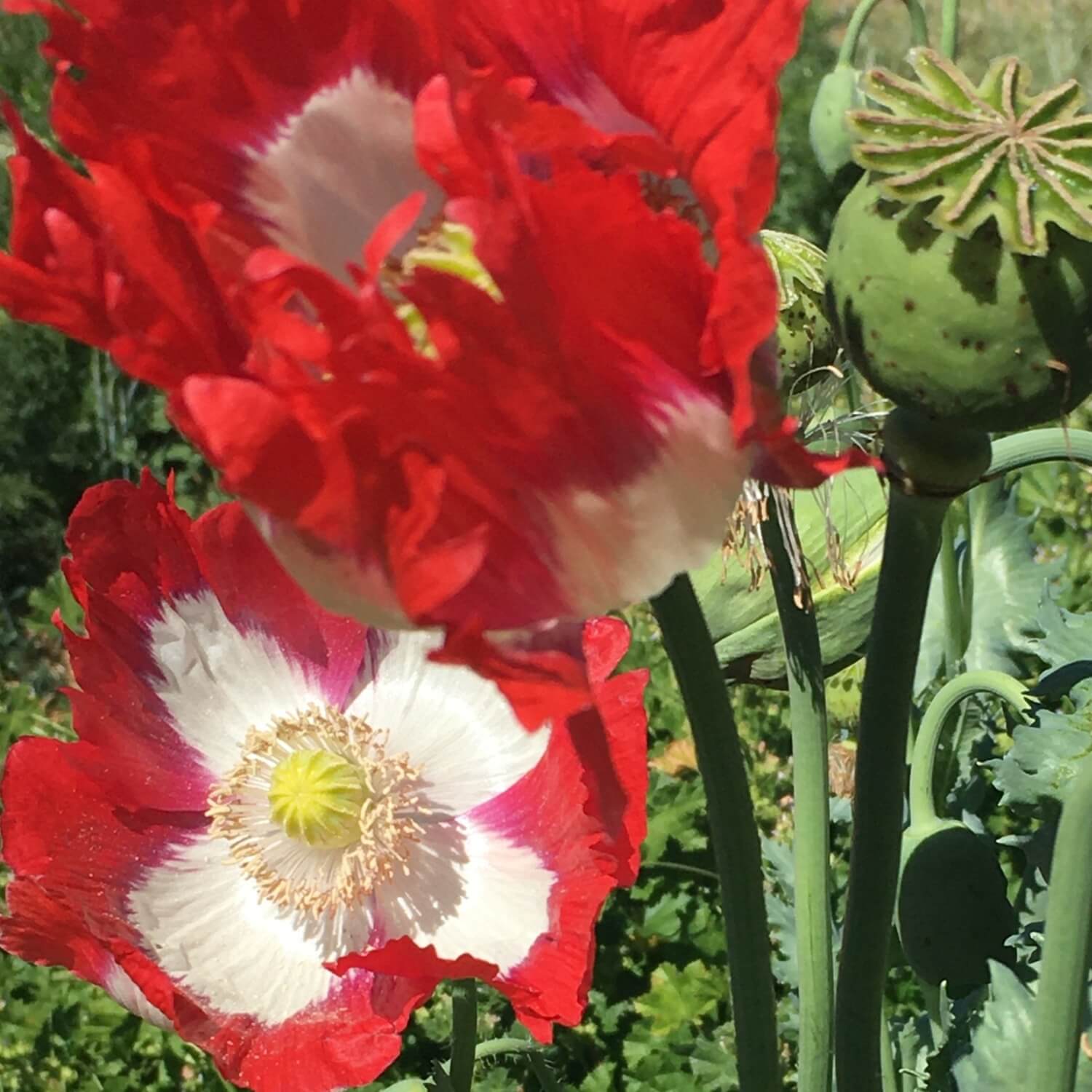
I always like to try something new. One variety in particular that I’m excited about is Swan Plant. A couple months ago I saw this variety being offered by another seed company under the name Hairy Balls. One look at the seed pods and you can see where they get this name. I had a chuckle but kept scrolling.
Fast forward to our New Zealand trip this spring. My daughter's piano teacher in NZ has this plant growing in pots in her kitchen bay window covered in Monarch butterfly larvae happily munching. Come to find out, this plant goes by the much nicer name of Swan Plant over there and it is a type of Milkweed!
(The photos below are all from the piano teacher's plants! Check them out.)
Both Swan Plant and its slightly larger sibling, Giant Swan Plant, are native to south eastern Africa and are widely naturalized in NZ. They go by the scientific names Gomphocarpus fructiosus and Gomphocarpus physocarpus respectively. Folks in NZ are really into growing both of these plants to provide for the Monarchs.
Monarchs in NZ? Yes! Even though Monarchs are native to North America, they spread naturally in the 1800s to NZ and are considered to be a native butterfly here as well. Luckily, Swan Plant also arrived in New Zealand in the 1800s and Monarchs are now one of the most common butterflies you will see.
In the USA there are two main populations of Monarchs. Here are some basic Monarch facts!
The western monarchs breed west of the Rocky Mountains and overwinter in CA coastal regions. As a student at UCSC twenty years ago I was lucky enough to see some of these overwintering monarchs at Natural Bridges.
The eastern monarchs are slightly more famous, sometimes flying up to 3000 miles. They breed in the Midwest and Canada and overwinter in mid- Mexico after making a long migration flight. Monarchs that reach adulthood in early summer get right to breeding but those that are born in late summer and early fall start the long flight to reach their winter grounds where they huddle together in fir trees.
When temperatures rise in the spring both populations of monarchs head north and inland to breed. Often there will be 4-5 lifecycles before they reach their destination.
The female butterfly lays 300-500 eggs on the undersides of milkweed plants over a 2-5 week period. The caterpillars spend about two weeks eating only milkweed leaves then form a chrysalis where they transform over a 1-2 weeks period.
The milkweed plant is toxic and by eating these leaves the butterflies also become toxic to predators. Their brilliant orange coloring serves as a signal to predators to leave them alone!
Milkweed is native to both the Americas and Africa. Species found in America have the genus Asclepias and those from Africa are known as Gomphocarpus, such as the Swan Plant here in NZ.
We carry the variety known as Showy Milkweed or Asclepias speciosa. It is native to the western states and does very well in a garden setting. Native milkweeds are hardy perennials whereas the tropical varieties like Swan Plant are tender perennials surviving in zones 8-10 and should be treated as annuals in other zones.
It is no secret that monarch habitat is under threat from loss of wildlands. As gardeners we can do our part to protect them by the simple act of planting milkweed. I have found it to start easily from seed using basic techniques.
1. Start seeds in mid to late spring indoors or in greenhouse. A heat mat will accelerate germination but is not necessary. I have read advise to stratify seeds but haven't found this to be necessary. If you want to try stratification just put your seeds in a plastic baggy with a bit of damp potting soil for 2-4 weeks. Then remove seeds and plant normally.
2. Use good potting soil. Bury the seeds about ¼ inch. They should germinate within 10 days.
3. Transplant seedlings to permanent garden location after last frost date.
4. The native species generally do not flower in their first year.
Our stand of Showy Milkweed on the farm is about 4 years old and this is the first year we’ve collected enough seed to offer. I love this plant not only for the monarchs, but also for its beauty. The flowers are exquisite and the downy seeds inside their pods are love at first sight, especially for kids.
I’ll keep you posted on our Swan Plant growing project this summer and encourage you to grow Milkweed in your garden as well.






